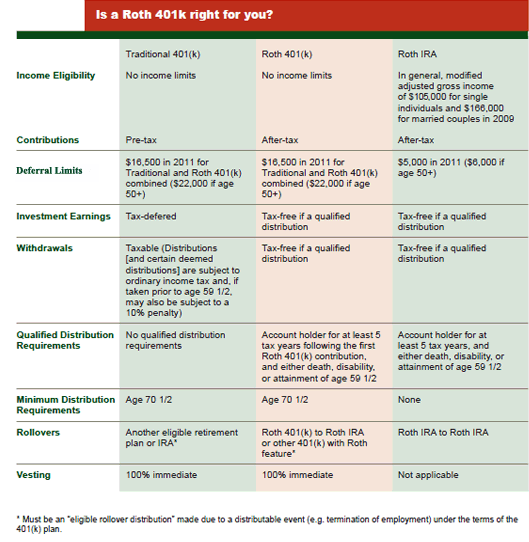
Key Differences Between Roth 401(k) Plans and Roth IRA’s

Scott Brookes, the Director of Retirement Plan Services, at Sharkey, Howes &
Javer can help you determine if a Roth 401(k) is right for you.
Contact Scott
Brookes to set up a complimentary consultation today.
We have been helping people design effective retirement plans since 1990.
Our
fee-only approach
assures that you are only paying for professional advices and not
commissions paid for investments sold
Reasons to Consider the Roth 401(k)
Reason 1
Your future tax rate may be higher than it is today.
For many individuals, it is sensible to think that you will be in a lower bracket
during retirement. Is it also sensible to think that the government will increase
tax rates? Perhaps rates will rise in the future and you will be in a lower bracket.
However, even though you may be in a lower tax bracket, this does not necessarily
mean that your tax rate will be lower.
For example, if you are in the highest bracket today, your federal tax rate is 35%.
If the three highest tax brackets in the future are 45%, 42% and 38% respectively,
even if you are in the lowest bracket, your tax rate may be higher.
Reason 2
The Roth 401(k) provides an opportunity to diversify future
tax risk. Prudent investing dictates that one should diversify investments
in accounts or investment vehicles that are taxed differently (i.e., taxable, tax-deferred,
tax-free). The Roth 401(k) provides a very attractive alternative to tax-free investing
as compared to traditional tax-free investments such as tax-free bonds.
Reason 3
The Roth 401(k) is a limited time offer; it may not
be available after the year 2010. The Roth 401(k) is the first and only qualified
retirement plan feature that permits after-tax contributions by participants of
any income level which accumulate tax-free, and allows the participant to take tax-free
distributions of both the principal contribution and accumulated earnings.
Reason 4
Roth IRAs are not subject to required minimum distributions.
By rolling over a Roth 401(k) to a Roth IRA at retirement, you can take advantage
of this provision and avoid the Required Minimum Distributions that the IRS requires
for individuals age 70 1/2 and older. This may have the greatest appeal to business
owners and other individuals who have substantial savings. The Roth IRA owner may
designate a younger spouse or non-spousal beneficiaries to “stretch” the tax-deferred
payments over a longer period of time to mitigate the impact of taxation. The Roth IRA provides
an opportunity to “super stretch” payments since no minimum distributions are required.
Reason 5
Roth 401(k) contributions maximize retirement benefits.
If the participant desires and has the ability to maximize contributions to a qualified
retirement plan, the Roth permits the participant to possibly accumulate a greater
after-tax retirement benefit.
Reason 6
The Roth option facilitates prepayment of income tax for estate
planning purposes. By paying income tax now on the Roth 401(k) contributions,
the participant effectively prepays federal income tax on money that passes to heirs
without impacting gift or estate tax exemptions.
Information presented is not designed to be tax, legal or investment advice and
is subject to change at any time. All investments contain risks, including the loss
of principal. Past performance is no guarantee of future results. Consult with Sharkey,
Howes & Javer to learn more about the strategies and information presented herein.